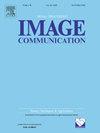自适应可学习的图像细节增强网络
IF 2.7
3区 工程技术
Q2 ENGINEERING, ELECTRICAL & ELECTRONIC
引用次数: 0
摘要
近年来,基于深度学习的单幅图像超分辨率(SISR)方法取得了显著进展。然而,它们的高计算复杂性和内存需求阻碍了在资源受限设备上的部署。虽然已经提出了许多轻量级的超分辨率(SR)方法来解决这个问题,但大多数方法都不能区分图像中的平面区域和细节区域,而是统一处理它们。由于缺乏对SR性能至关重要的详细区域的目标设计,导致现有轻量级方法的冗余和低效率。为了解决这些挑战,我们提出了一种简单而有效的网络自适应可学习细节增强网络(LDEN),该网络专门关注细节区域的重建。首先,我们提出了两种重建细节区域的设计方案:(1)我们设计了可学习细节提取块(LDEB),它可以特别关注细节区域,并在LDEB中使用更大的卷积核来获得更大的接受场;(2)设计了一种轻量级的细节导向空间注意(DSA)机制,增强了神经网络重构细节区域的能力。其次,设计了一种高效层次优化块(Efficient hierarchical refinement Block, EHRB)的分层优化机制,减少了粗糙的单层优化导致的信息提取和集成不足;大量的实验表明,LDEN在所有基准数据集上都达到了最先进的性能。值得注意的是,对于4倍放大任务,LDEN优于BSRN (NTIRE 2022高效SR挑战赛模型复杂度轨道冠军),实现了0.11 dB和0.12 dB的增益,同时减少了近10%的参数。本文章由计算机程序翻译,如有差异,请以英文原文为准。
Self-adaptive and learnable detail enhancement network for efficient image super resolution
In recent years, single image super-resolution (SISR) methods based on deep learning have advanced significantly. However, their high computational complexity and memory demands hinder deployment on resource-constrained devices. Although numerous lightweight super-resolution (SR) methods have been proposed to address this issue, most fail to distinguish between flat and detailed regions in images, treating them uniformly. This lack of targeted design for detailed regions, which are critical to SR performance, results in redundancy and inefficiency in existing lightweight methods. To address these challenges, we propose a simple yet effective network Self-adaptive and Learnable Detail Enhancement Network (LDEN) that specifically focuses on the reconstruction of detailed regions. Firstly, we present two designs for the reconstruction of detailed regions: (1) we design the Learnable Detail Extraction Block (LDEB), which can pay special attention to detailed regions and employ a larger convolution kernel in LDEB to obtain a larger receptive field; (2) we design a lightweight attention mechanism called Detail-oriented Spatial Attention (DSA) to enhance the network's ability to reconstruct detailed regions. Secondly, we design a hierarchical refinement mechanism named Efficient Hierarchical Refinement Block (EHRB) which can reduce the inadequate information extraction and integration caused by rough single-layer refinement. Extensive experiments demonstrate that LDEN achieves state-of-the-art performance on all benchmark datasets. Notably, for 4 × magnification tasks, LDEN outperforms BSRN - the champion of the model complexity track of NTIRE 2022 Efficient SR Challenge - by achieving gains of 0.11 dB and 0.12 dB while reducing parameters by nearly 10 %.
求助全文
通过发布文献求助,成功后即可免费获取论文全文。
去求助
来源期刊

Signal Processing-Image Communication
工程技术-工程:电子与电气
CiteScore
8.40
自引率
2.90%
发文量
138
审稿时长
5.2 months
期刊介绍:
Signal Processing: Image Communication is an international journal for the development of the theory and practice of image communication. Its primary objectives are the following:
To present a forum for the advancement of theory and practice of image communication.
To stimulate cross-fertilization between areas similar in nature which have traditionally been separated, for example, various aspects of visual communications and information systems.
To contribute to a rapid information exchange between the industrial and academic environments.
The editorial policy and the technical content of the journal are the responsibility of the Editor-in-Chief, the Area Editors and the Advisory Editors. The Journal is self-supporting from subscription income and contains a minimum amount of advertisements. Advertisements are subject to the prior approval of the Editor-in-Chief. The journal welcomes contributions from every country in the world.
Signal Processing: Image Communication publishes articles relating to aspects of the design, implementation and use of image communication systems. The journal features original research work, tutorial and review articles, and accounts of practical developments.
Subjects of interest include image/video coding, 3D video representations and compression, 3D graphics and animation compression, HDTV and 3DTV systems, video adaptation, video over IP, peer-to-peer video networking, interactive visual communication, multi-user video conferencing, wireless video broadcasting and communication, visual surveillance, 2D and 3D image/video quality measures, pre/post processing, video restoration and super-resolution, multi-camera video analysis, motion analysis, content-based image/video indexing and retrieval, face and gesture processing, video synthesis, 2D and 3D image/video acquisition and display technologies, architectures for image/video processing and communication.
 求助内容:
求助内容: 应助结果提醒方式:
应助结果提醒方式:


